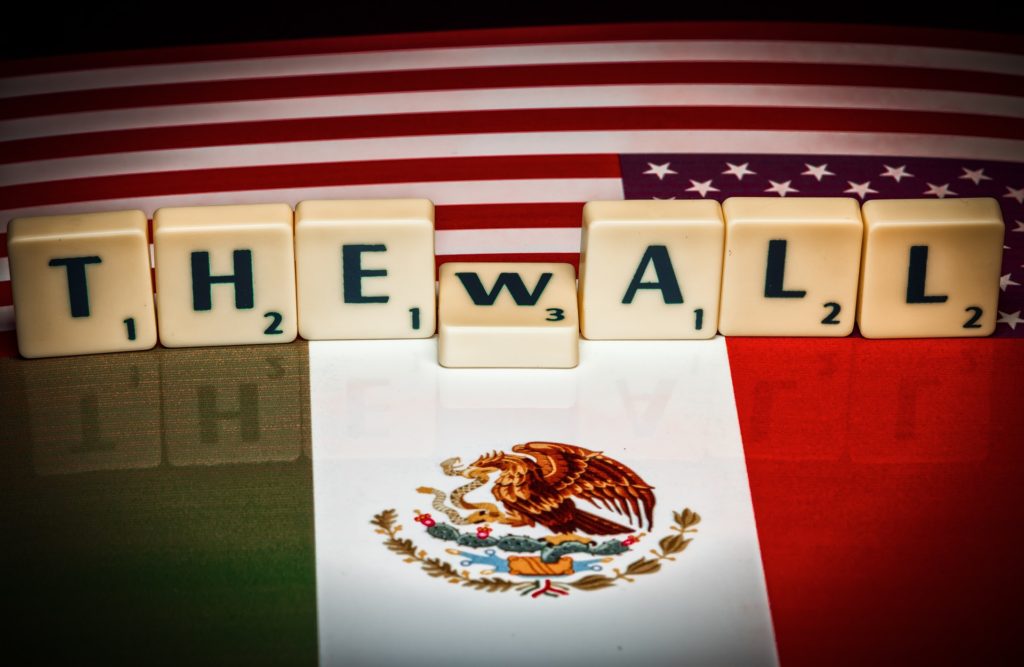
By: Claude Ngatchou, Staff Writer
On February 15, during a news conference in the White House Rose Garden, President Trump announced that he would sign a spending bill to prevent another government shutdown and declared a national emergency to fund construction of a wall along the southern border.[1] In the spending bill passed by Congress, only $1.375 billion was allocated for border barriers – Trump wanted $5.7 billion.[2]
President Trump’s emergency declaration faced immediate criticism from Democrats. House Speaker Nancy Pelosi (D-CA) and Senate Minority Leader Chuck Schumer (D-NY) issued a statement calling it an “unlawful declaration over a crisis that does not exist,” and vowed that “Congress cannot let the President shred the Constitution.”[3]
In addition to the democrat’s criticism, Trump’s declaration is also facing legal challenges. On Monday, February 18, 16 states filed a lawsuit against President Trump in the U.S. District Court for the Northern District of California.[4] The complaint alleges that the emergency declaration is unconstitutional and seeks to bar the Trump Administration from diverting money from other projects to fund the border wall.[5] California Attorney General Xavier Becerra, who spearheaded the lawsuit, stated that “the Constitution gives Congress alone the power to control spending, not the president.”[6] The law suit also alleges that “redirecting funds from drug interdiction, military construction projects and laws enforcement initiatives toward a wall would cause ‘significant harm’ to the public safety, financial well-being and natural resources of the plaintiff states and their residents.”[7] In other words, the states are arguing that they have standing to file the lawsuit since Trump may be appropriating money that was allocated to them.[8]
Before the lawsuit was filed, President Trump acknowledged the likelihood of legal challenges.[9] He said, “We will possibly get a bad ruling, and then we’ll get another bad ruling, and then we’ll end up in the Supreme Court, and hopefully we’ll get a fair shake.”[10]
President Trump is not the first president whose declaration was challenged in the courts. In Youngstown Sheet & Tube Co. v. Sawyer, the Supreme Court ruled against President Truman’s seizure and possession of privately owned steel mills.[11] It held that Truman’s would be an overreach of executive power and stated that the President does not have lawmaking powers.[12] The Supreme Court explained that “The Founders of this Nation entrusted the lawmaking power to the Congress alone in both good and bad times.”[13]
After Youngstown, Congress enacted the National Emergency Act of 1976 to formalize the power of Congress to provide checks and balances on the emergency powers.[14] Under the National Emergencies Act of 1976, a president must formally submit to Congress and to the Federal register a declaration of the national emergency, specify the statutory authorities he or she is invoking, and renew the declaration every year, or it will automatically expire.[15]
According to a statement issued on the White House website, the Trump administration is providing legal justification through the statutory authorities he is invoking.[16] Furthermore, the declaration has been formally submitted to the Federal Register and Congress.[17] Therefore, it appears that the Trump Administration is complying with the statutory requirements on the National Emergencies Act.
On March 14, the Senate voted to overturn President Trump’s emergency declaration, 59 to 41.[18] After the legislation passed, Trump issued the first veto of his presidency.[19] The next step for Congress is to decide whether they will vote to overturn the president’s veto.[20] However, “Congress [] almost certainly does not have enough votes” to override the veto.[21]
As for the legal challenges, the courts may be faced with a lot of questions, including the challenge to define a national emergency in order to reduce the likelihood of abuse and take the responsibilities of a liberal and democratic interpretation of Congress’s emergency law out of the president’s scope. Nevertheless, University of California Law Professor John Yoo thinks Trump has a winning legal agreement. He stated, “Trump’s best hope in court is that judges (and presumably SCOTUS) will take the traditional deference to the president’s national-security authority and combine that with express congressional delegation of emergency powers to give him virtual carte blanche in situations like this.”[22]
Sources:
[1] http://time.com/5496270/presidents-history-national-emergency/
[2] Id.
[3] https://www.speaker.gov/newsroom/21519-2/
[4] https://www.npr.org/2019/02/18/695821740/16-states-sue-over-trumps-national-emergency-declaration.
[5] https://www.npr.org/2019/02/18/695821740/16-states-sue-over-trumps-national-emergency-declaration.
[6] Id.
[7] Id.
[8] Id.
[9] Id.
[10] Id.
[11] Youngstown Sheet & Tube Co. v. Sawyer, 343 U.S. 579 (1952).
[12] Id.
[13] Id. at 589.
[14] http://uscode.house.gov/view.xhtml?path=/prelim@title50/chapter34&edition=prelim.
[15] Id.
[16] https://www.whitehouse.gov/briefings-statements/funds-available-address-national-emergency-border/
[17] https://www.federalregister.gov/documents/2019/02/20/2019-03011/declaring-a-national-emergency-concerning-the-southern-border-of-the-united-states, submission to congress is missing
[18] https://www.nytimes.com/2019/03/15/us/politics/trump-veto-national-emergency.html
[19] Id.
[20] Id.
[21]Id.
[22] http://nymag.com/intelligencer/2019/02/trump-counting-on-supremes-to-support-emergency-declaration.html